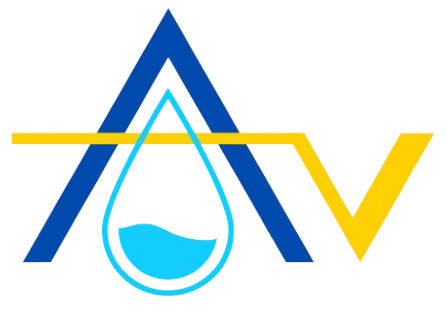EPDM Waterproofing: Definition, Properties, Test Methods, Usage, Installing and Protection

EPDM (Ethylene Propylene Diene Monomer) waterproofing membranes are a type of thin, building water impervious layer that is made of synthetic rubber, which is used to waterproof basements, roofs, foundations, and decks. Higher thickness, durability, UV resistance, and breathability are the most important properties that can improve the waterproofing capabilities of the EPDM.
EPDM waterproofing membrane is tested according to the ASTM standards. The most used ASTM test methods for EPDM are ASTM-412, ASTM D-624, ASTM-746, ASTM D-573, ASTM D-1204, ASTM D-471, ASTM D-816, ASTM E-96 and ASTM E-154. When you use an EPDM waterproofing membrane, its product specification should be in compatible with the ASTM requirements.
Using EPDM waterproofing membranes, you can waterproof roofs, basements, foundations, and decks due to their water resistance, UV resistance, flexibility, and durability. You can install an EPDM waterproofing membrane on the surface by following the below steps. You should use a skilled expert for a successful EPDM installation.
Installed EPDM waterproofing membrane can be damaged due to human activities and environmental incidents. As human activities, EPDM membranes can damaged due to wear and tear due to cutting and drilling, exposure to harsh chemicals, incorrect EPDM installations, and poor maintenance. The most popular environmental incidents that can damage EPDM membranes are UV radiation, higher thermal fluctuation, wind, higher rainfall, and water pressure.
You can protect the EPDM waterproofing membrane by doing regular inspections, minimizing foot traffic, avoiding chemical exposure, implementing proper drainage systems, applying UV sealants, avoiding sharp objects, and following proper installation methodology. You can use PVC waterproofing membranes instead of EPDM waterproofing membranes.
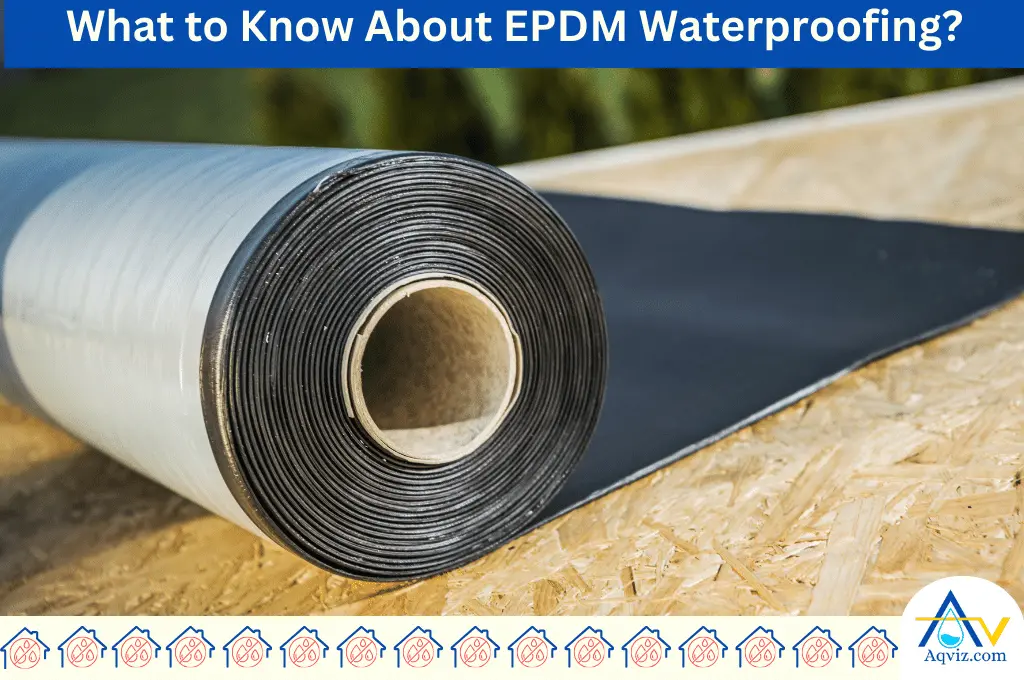
What is the Meaning of the EPDM Waterproofing Membrane?
The meaning of EPDM waterproofing membrane is a type of thin, building water impervious layer that is made by synthetic rubber, which is used to waterproof basements, roofs, foundations and decks. EPDM stands for Ethylene Propylene Diene Monomer it is a type of sheet waterproofing membrane.
What Are the Properties of EPDM Waterproofing?
The most important properties of EPDM waterproofing membranes are thickness, UV resistance, chemical resistance, breathability, durability, flexibility, weight, and density. These properties are highly important as a waterproofing membrane.

What is the Thickness of EPDM Rubber Waterproofing?
The recommended thickness of the EPDM waterproofing membrane, according to the ASTM D-142, is 1.37 millimetres. But it is available in thickness between 0.75mm – 2 mm according to different tasks and purposes. Thinner EPDM waterproofing membranes are weak at waterproofing and thicker membranes are prone to higher water resistance.
What is the Durability of EPDM Waterproofing?
The durability of the EPDM waterproofing membrane is more than 45 years. The durability of the EPDM depends on the weather conditions, sunlight conditions, temperature fluctuation, repair and maintenance, and outer coating that you apply. Hence, EPDM waterproofing is used for roof and basement waterproofing.
Is EPDM Rubber Membrane UV Resistant?
Most of EPDM waterproofing membranes are UV resistant. Therefore, EPDM waterproofing membranes can be used for outdoor waterproof projects such as roofs, decks, and balconies. The UV resistance of the EPDM helps to prevent decay, and degradable due to UV radiation in the sunlight in the daytime.
Is EPDM Rubber Membrane Breathable?
Yes, EPDM rubber membranes are breathable. Hence it can pass vapour water through the EPDM membrane. Due to the breathability of the EPDM waterproofing membrane, it prevents blisterings and mold and mildew growth under the waterproofing layer. Therefore EPDM waterproofing membrane on the substrate will be protected over time from moisture.
What Are the ASTM Test Methods and Requirements for EPDM Waterproofing Membranes?
ASTM test methods are standards developed by the American Society for Testing and Materials in order to establish procedures and guidelines for testing and evaluating the properties of materials and products.
EPDM waterproofing material properties is tested by ASTM-412, ASTM D-624, ASTM-746, ASTM D-573, ASTM D-1204, ASTM D-471, ASTM D-816, ASTM E-96, and ASTM E-154 test methods. These are the recommended values according to these test methods.
| Physical Property Of EPDM | ASTM test method | Requirement Values |
| Thickness (mm) | ASTM D-412 | 1.37 |
| Hardness | ASTM D -2240 | 60±10 |
| Tensile Strength (MPa) | ASTM D-412 | 9 (min) |
| Elongation Ultimate (%) | ASTM D-412 | 300 (min) |
| Tensile set (%) | ASTM D-412 | 10 (Max) |
| Tear Resistance (kN/m) | ASTM D-624 | 26.27 (min) |
| Brittleness Temperature ( °C) | ASTM D-746 | -45 |
| Heat Aging (166h @ 116 °C) | ASTM D-573 | |
| Tensile Strength (MPa) | ASTM D-412 | 8.30 (min) |
| Elongation Ultimate (%) | ASTM D-412 | 210 (min) |
| Linear Dimensional Change (%) | ASTM D-1204 | ±1 |
| Water Absorption at 70°C 166 hours (%) | ASTM D-471 | 4 (max) |
| Factory Seam Strength (MPa) | ASTM D-816 | 8.8 |
| Water Vapour Permeance (mgpasm2) | ASTM E-96 | 3.50 (max) |
| Puncture Resistance (Kg) | ASTM E-154 | 32 |
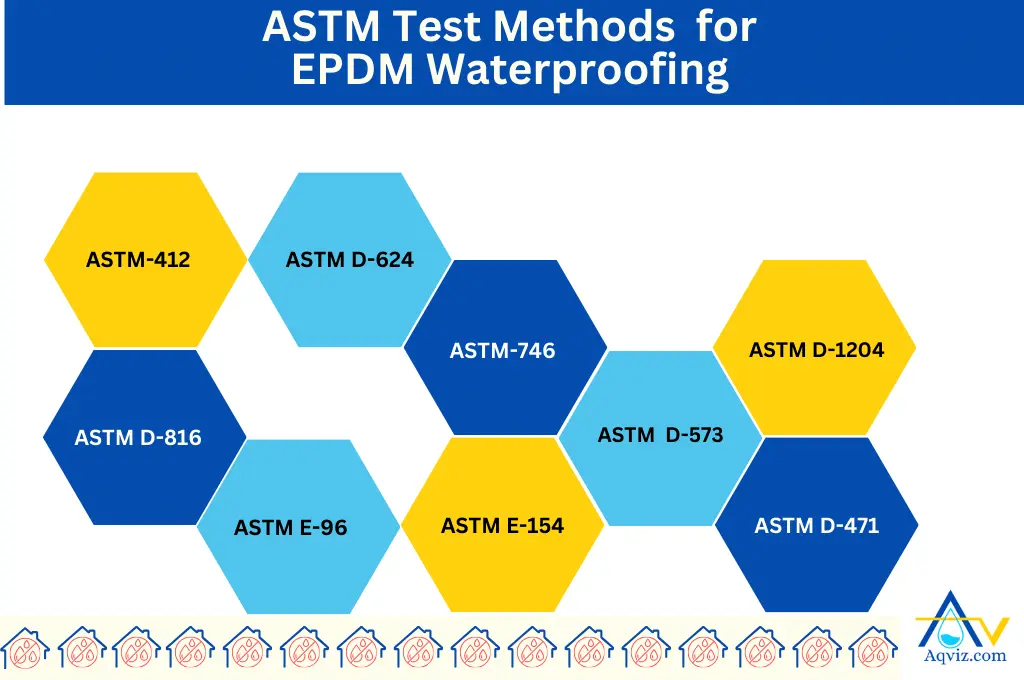
What Building Components Can I Waterproof Using EPDM?
You can waterproof roofs, basements, foundations and decks using EPDM waterproof membranes. EPDM waterproof membranes are water-resistant, UV-resistant, flexible, and durable waterproofing membranes. Hence it can withstand in high sunlight. Groundwater pressure, wearing and tearing, minor structural movements and temperature fluctuation in the below building components.
EPDM Roof Waterproofing
EPDM can be used as a roof waterproofing membrane. EPDM is a water-resistant, UV-resistant, flexible, and durable waterproofing membrane with a wide range of temperature fluctuations. Hence, it can withstand on the roof under heavy rain, wide temperature fluctuation in the winter season as well as under heavy sunlight in summer. Due to its lightweight and flexibility, EPDM waterproofing membranes can be installed on the roof with minimum effort.
EPDM Basement Waterproofing
EPDM waterproofing membranes can be used as basement waterproofing membranes. EPDM waterproofing membranes can be used for both exterior and interior basement waterproofing membranes. EPDM is a water-resistant, flexible, thicker, high tear and tensile strength waterproofing membrane. Hence EPDM waterproofing membrane can withstand minor structure and soil movements due to its flexibility under heavy water pressure.
EPDM Foundation Waterproofing
EPDM waterproofing membranes can be used for foundation waterproofing. EPDM can be used for both interior and exterior foundation waterproofing . EPDM is water-resistant, flexible, durable, and has a wide range of temperature fluctuations. Hence it can withstand high water and soil pressure during the rainy season; due to its flexibility, it can lay on the foundation in an effective way without damaging the EPDM membrane. Due to its durability and temperature fluctuation, it can withstand during the winter and summer seasons successfully as a waterproofing membrane.
EPDM Deck Waterproofing
EPDM rubber membranes can be used for under-deck waterproofing . EDPM is a flexible, water-resistant, UV-resistant and durable sheet membrane. Hence EPDM waterproofing membranes can be used to build under deck drainage systems to remove the water accumulated on the deck surface. Due to the flexibility of the EPDM waterproofing membranes, it can be installed between the joists and rim joists. UV resistance of the EPDM helps to withstand the membrane under heavy sunlight. UV resistance of the EPDM membrane is important for outdoor deck usage. EPDM has more than 45 years of durability. Hence, it can withstand less maintenance and inspections during its service life.
You can do building waterproofing by using these 6 Types of EPDM Membranes .
How to Install EPDM Waterproofing Membrane?
EPDM waterproofing membrane can be installed on the substrate by following these 7 steps.
- Prepare the surface for EPDM waterproofing: Remove any debris, like screws, nails, wood, dust and oil marks on the surface. If the surface is not clean, the EPDM membrane may not adhere properly.
- Install underlayment before installing EPDM: Install suitable underlayment for the EPDM membranes.
- Unroll and position the EPDM waterproofing: Once you have your EPDM material ready, roll it out onto the surface. Position it correctly and let it relax for at least half an hour.
- Adhere the EPDM membrane: Choose a suitable adhering method for the last long and efficient EPDM waterproofing membrane.
- Seal the seams, corners, edges, and openings.
- Do EPDM quality inspection: After installing the EPDM, check for defects and mistakes.
- Protect the installation: Protect the EPDM layer by following the recommended protection method to last long.
Before you install EPDM waterproofing, you should know How to Install EPDM Waterproofing Membrane properly. This guide will help you to do it as an expert.
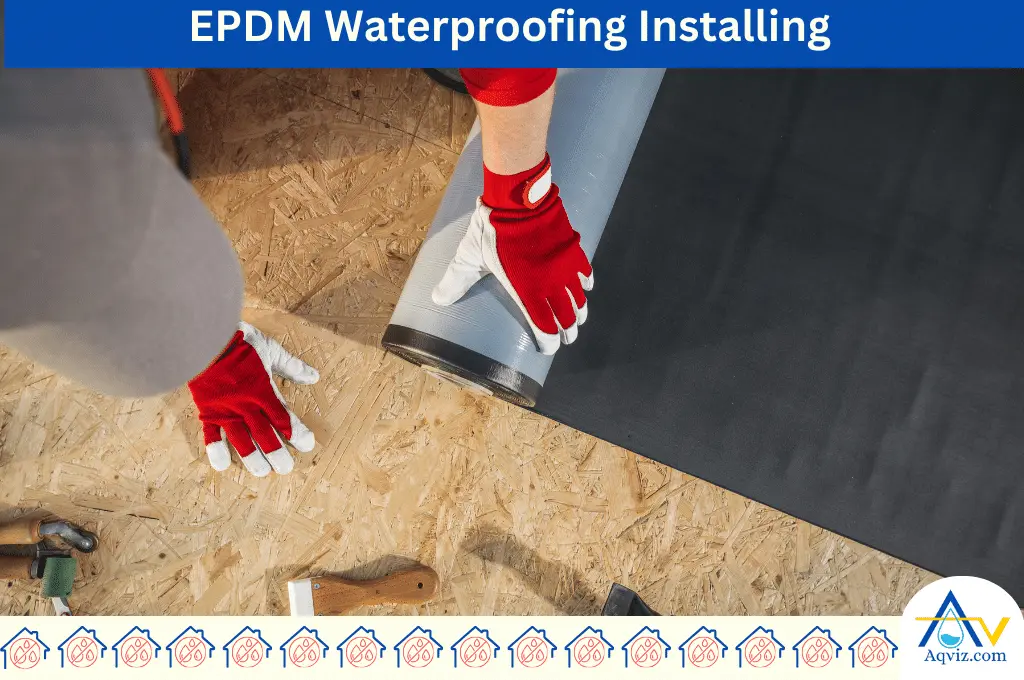
How to Damage EPDM Waterproofing?
An EPDM waterproofing membrane can be damaged due to human activities and environmental incidents. As human activities, EPDM membrane can damaged due to wear and tear due to cutting and drilling, exposure to chemicals, incorrect installations, and poor maintenance. The most popular environmental incidents that can damage EPDM membranes are UV radiation, higher thermal fluctuation, wind, higher rainfall, and water pressure.
- Wear and tear due to cutting and drilling on the EPDM membrane – The EPDM membrane can be damaged due to punctures or tears on the membrane. That can wear and tear the membrane as it prone to leak the water through.
- EPDM membrane exposure to chemicals – The EPDM waterproofing membrane can be damaged or degrade when it is opened to harsh chemicals.
- Incorrect EPDM installation – Incorrect EPDM installation can cause the waterproofing membranes at the seams and joints. Hence this can damage the EPDM membrane over time.
- Poor EPDM waterproofing maintenance – Poor waterproof membrane maintenance allows for severe leakages and damage on the membrane.
- UV radiation – EPDM membranes can be degraded due to UV rays when it is open a long time to the sunlight.
- Higher thermal fluctuation – Higher thermal fluctuation of the environment can fatigue the material. When it happens over time, the EPDM membrane can be damaged.
- Higher wind and rainfall – Higher wind can tear the EPDM membrane when it is aging. Rainfall can increase the underground water pressure. This causes to wear and tear in the EPDM layer.
How to Protect EPDM Waterproofing?
EPDM waterproofing membranes can be protected by doing regular inspections, minimizing foot traffic, avoiding chemical exposure, implementing proper drainage systems, applying UV sealants, avoiding sharp objects, and following proper installation methodology.
- Do regular EPDM layer inspection – Do regular EPDM inspection to identify any signs of damage, such as punctures, tears, or visible wear.
- Minimize foot traffic on the EPDM membrane – Avoid dragging heavy equipment or tools across the membrane during the construction period.
- Avoid chemical exposure on the EPDM layer – Protect the EPDM membrane from exposure to chemicals, solvents, or petroleum-based products that can degrade the material.
- Implement the Proper drainage system around the EPDM layer – Build a properly slopped drainage system around the EPDM membrane to run away the accumulated water on the surface
- Use UV protection on the EPDM – You can use UV-protection sealant, spray or coating on the waterproofing membrane to protect it from UV rays.
- Avoid drilling and cutting on the surface – Waterproofed EPDM membranes should be protected by cutting and drilling on the surface. These activities can damage the waterproofing membranes by making holes.
- Follow proper EPDM installation method – You can protect the EPDM waterproofing membrane by following proper manufacturing instructions. This causes to more durability of the EPDM membrane.
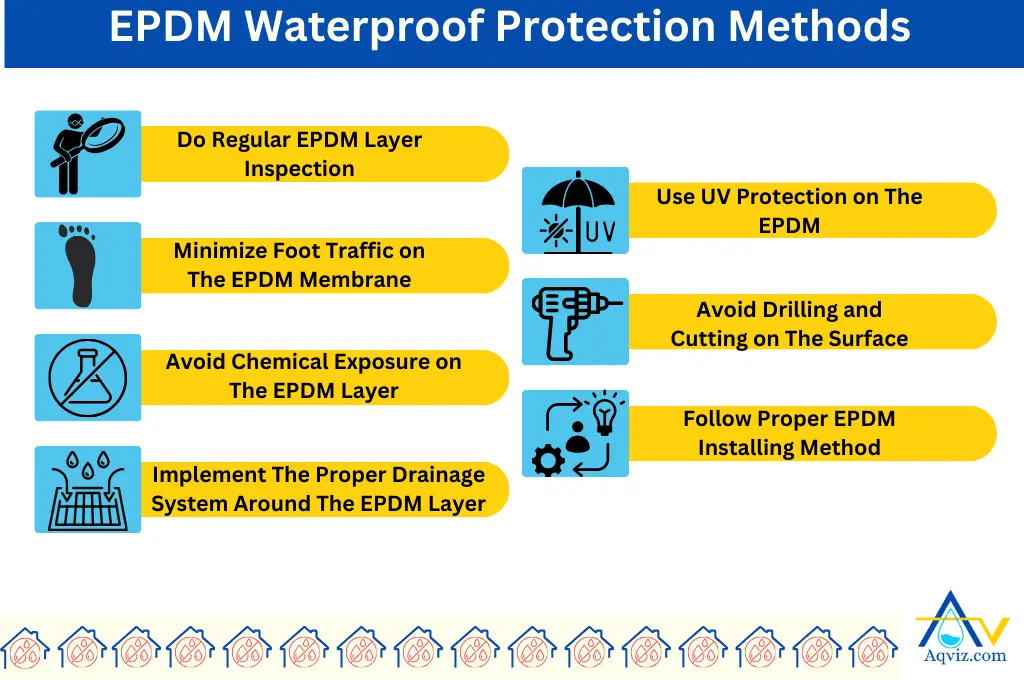
What Are the Differences Between EPDM and PVC Waterproofing?
EPDM (Ethylene Propylene Diene Monomer) and PVC (Polyvinyl Chloride) are both popular waterproofing methods . But there are differences between EPDM and PVC waterproofing related to composition, characteristics, and applications.
- Material Composition Differences Between EPDM and PVC:
- EPDM: EPDM is a synthetic rubber material made from ethylene, propylene, and diene monomers. It is known for its flexibility, durability, and resistance to weathering, UV radiation, and ozone exposure.
- PVC: PVC is a type of thermoplastic polymer composed of vinyl chloride monomers. It is known for its strength, chemical resistance, and versatility.
- Flexibility Differences Between EPDM and PVC:
- EPDM: EPDM is highly flexible and remains pliable even in cold temperatures. This flexibility makes it suitable for a variety of applications, including roofing on both flat and low-slope structures.
- PVC: PVC is also flexible but may become less flexible in colder temperatures. It is still commonly used in roofing and waterproofing applications.
- Durability Differences Between EPDM and PVC :
- EPDM: EPDM is known for its durability and ability to withstand environmental conditions, including exposure to sunlight, heat, and ozone. It generally has a long service life.
- PVC: PVC is durable and has good resistance to chemicals, making it suitable for a range of applications. However, its long-term performance may be influenced by exposure to UV radiation.
- Installation Differences Between EPDM and PVC:
- EPDM: EPDM is often available in large sheets, making it relatively easy to install. The seams are typically adhered or mechanically fastened, and the material is known for its ease of handling during installation.
- PVC: PVC is also available in sheets and is typically installed by heat-welding the seams. Proper welding is crucial for maintaining the waterproofing integrity.
- Cost Differences Between EPDM and PVC:
- EPDM: In some cases, EPDM may be more cost-effective than PVC, depending on the specific project requirements and market conditions.
- PVC: PVC is generally competitive in terms of cost and offers good value for its durability and performance.
- Application Differences Between EPDM and PVC:
- EPDM: EPDM is commonly used in roofing applications, including flat roofs and low-slope roofs. It is also used in pond liners, automotive weatherstripping, and other sealing applications.
- PVC: PVC is used in various applications, including roofing, waterproofing of underground structures, and in the manufacturing of pipes, cables, and other products.
- Environmental Considerations:
- Both EPDM and PVC can be recycled, but the environmental impact of each material depends on factors such as manufacturing processes and disposal methods.
